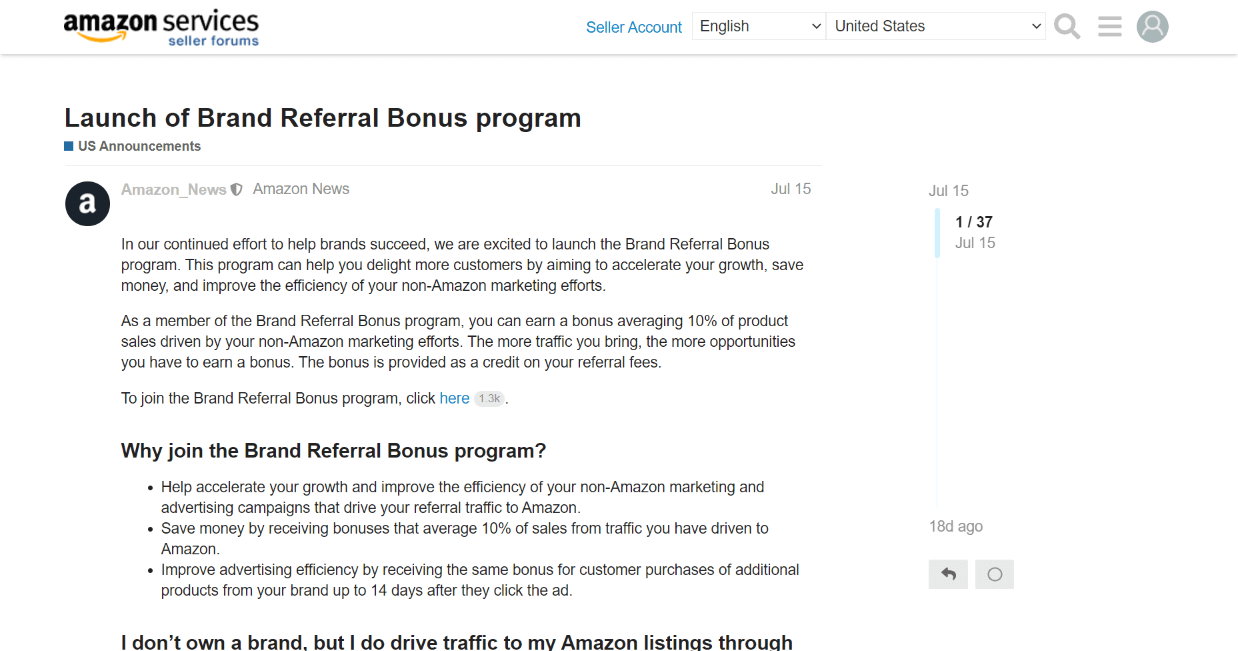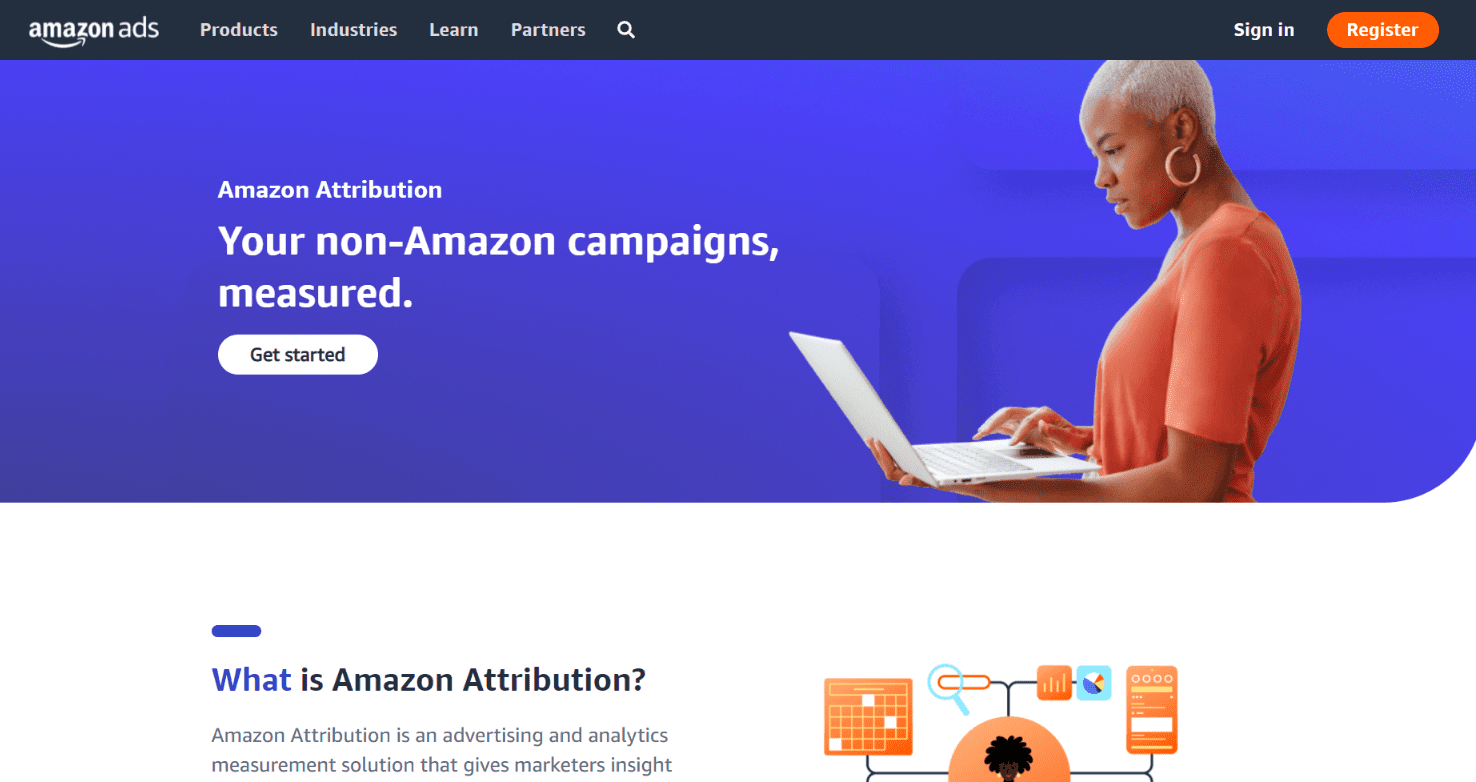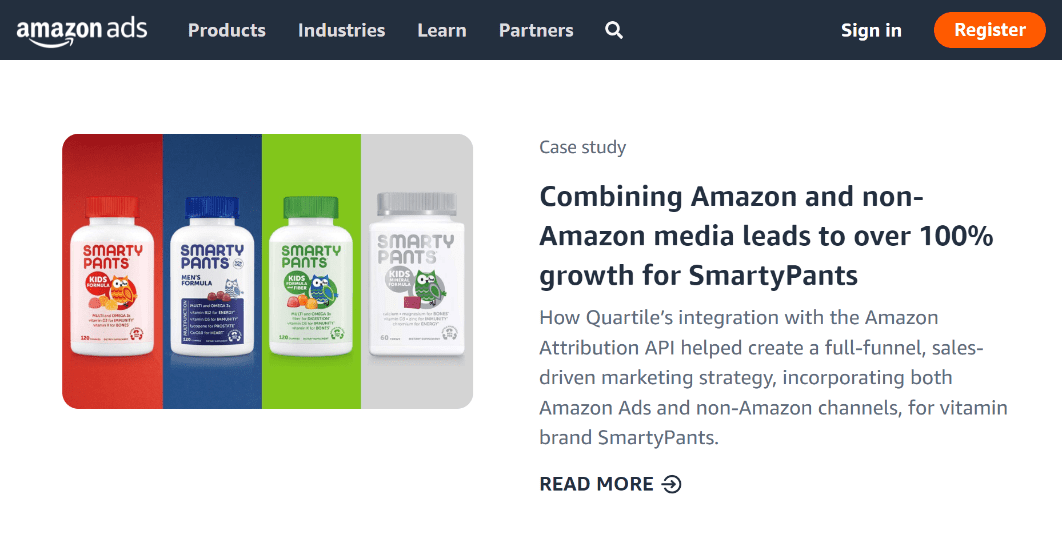Amazon Attribution: Tracking Your Advertising Efforts Off Amazon

Most brands will use advertising at some point to expose their products or services to consumers that meet certain criteria or show interest in similar subjects.
On some platforms, advertising has become almost a necessity to capture attention, especially early on. Consumers are embracing online shopping, which means established brands are embracing online advertising. Many of these brands have millions to spend on advertising, which makes ad costs rise for smaller brands. Amazon is no different.
As a seller, you have to strategize around what traffic sources are going to be the best use of your ad dollars. If you run ads with no way of telling if that traffic converts, you can end up spending a lot of money for very little return. Thankfully, Amazon has a tool called “Amazon Attribution” that helps solve that issue.
In today’s article, we’re going to cover why you should drive traffic from off Amazon to your Amazon listing and break down the benefits of using Amazon Attribution.
Why Drive Traffic Off Amazon?
Before we cover the Amazon Attribution feature, let’s answer the question, “why should I drive traffic off Amazon?”
Amazon has its own advertising platform called “Amazon Ads” (formerly “Amazon Marketing Services,” or AMS for short), and many fulfillment by Amazon (FBA) sellers rely solely on that for their advertising.
With Amazon Ads, you can run ads that show in the search results, on competitors’ pages, videos ads, and more.
When you’re selling on Amazon, you should definitely incorporate Amazon’s native ad platform into your ad strategy, but driving traffic from off the website provides another means for you to increase your sales velocity. Higher sales velocity usually means a higher organic ranking—that way when shoppers on Amazon search for a keyword, you’ll show up higher in the search results.
Amazon keeps their customer list tight so some people may wonder if driving traffic to their Amazon listing is even worth it. Wouldn’t it be better to drive traffic to their eCommerce store where they’d at least be able to collect contact information to remarket to?
It comes back to understanding the nature of the platform. If you want to increase your ranking and stay competitive among the other listings, especially early on, sending traffic to your listing can be helpful. If that traffic converts, that means an increase in your sales velocity.
You’ll also want to consider the fact that most people are familiar with Amazon. A lot of people are Prime members and enjoy the convenience of having their cards on file and the excellent customer service Amazon provides.
Converting them on Amazon may be an easier sale. They may have never purchased had you sent them to your eCommerce site. Now, it’s up to you to deliver and delight them. On your inserts, you might offer a special deal or list your website—obviously staying within Amazon guidelines. From there, you can get them on your list to market to them directly.
The Brand Referral Program
Another benefit of driving traffic to Amazon is that you can earn a referral bonus from the visitors who convert. In the summer of 2021, Amazon announced the Brand Referral Program.
The program incentivizes you to drive traffic to Amazon.
If you use Amazon Attribution, Amazon will be able to tell which sales came from the traffic you sent and if that traffic converts, Amazon will offer you a 10% referral bonus. Your bonus is credited two months after the sale. That 10% can help cover the cost of Amazon fulfillment fees and storage fees.
What is Amazon Attribution?
Amazon Attribution is a free tool available to brand-registered sellers that allows you to measure the performance of the traffic you send to your Amazon listing.
Before the tool was available, you had no way of telling how much of a spike in sales was due to your advertising efforts. You might be able to assume, but you can’t scale an assumption. Tracking is crucial for optimizing your advertising and making your spending worth it.
Once you sign up for Attribution, you’ll create an attribution tag. The tag is attached to the URL that you’ll use in your advertising or promotions. The tag follows the customer as they travel from your ad to your listing.
Amazon Attribution data contains the following:
-
Impressions
-
Click-through rate
-
Detail page views
-
Total sales
-
Add to Carts
What Are The Benefits of Amazon Attribution?
Measure
The most obvious benefit of Amazon Attribution is that you’re able to measure the response you get from your off-Amazon advertising and promotions. You can see how many people added your product to their cart and how many sales you received.
One way you might use the feature is to evaluate the response from your email promotions. Do your customers convert from your email promotions? If so, you might make an extra effort to capture leads on your website and include your website on your package and insert so you can market to them directly.
Another way to use Attribution is on social media. There’s a lot of noise on social media, but if you find that the traffic from a certain platform tends to convert, you might focus your content efforts on that platform.
Learn
Media: If you run a visual-based ad, you’ll learn what images are most attractive to prospects. If you see that a certain image is converting more customers, you might add it to your Amazon listing.
Message: Whether you’re driving traffic from an email, social media post, Facebook ad, or your website, you’ll be able to see where the highest converting traffic comes from.
What’s your messaging like from that source? For example, if your Facebook posting strategy is to post inspirational content and you find that your Facebook page has the highest converting shoppers, you might double down on Facebook and/or post inspirational content on your other social media channels too.
Strategize
Targeting: On various ad platforms, you can target people by interest. Well, if an ad targeted to a certain interest group is converting well, you might dive deeper into that interest to learn more about your market.
Similarly, on certain ad platforms, you might target by age, gender, or income. If you see that your ad campaign targeted to ages 30-45 converts well, you can use that information to adjust your copy or brand messaging to speak to the desires and concerns of people in that age group.
Timing: With Amazon Attribution, you can find out when traffic from a certain platform is most likely to convert. For some products, there may not be a noteworthy trend, but for other products, you might find that the traffic you drive from a platform routinely converts best in the evening. With that sort of optimization, you can run your ads more profitably.
Wrapping Up
When you’re running an Amazon FBA business, you don’t get a whole lot of access to data about customer response rates, so any data you can get is helpful. With Amazon Attribution and programs like the Brand Referral Bonus, you’re empowered to drive traffic to the platform.
With the performance metrics that Amazon shares through the feature, you can optimize your off-Amazon marketing and advertising efforts to learn more about your market, generate more sales, and increase your organic ranking in the search results.
Happy Selling,
The Page.One Team
The Last Word:
You can use Amazon Attribution to optimize your Amazon product listing. If you run several Facebook ads with different images, you’ll soon learn which ones produce the most conversions. You might use that insight to adjust the photos on your Amazon listing or your copy so that more of the native shoppers on the platform convert when they visit your listing.









